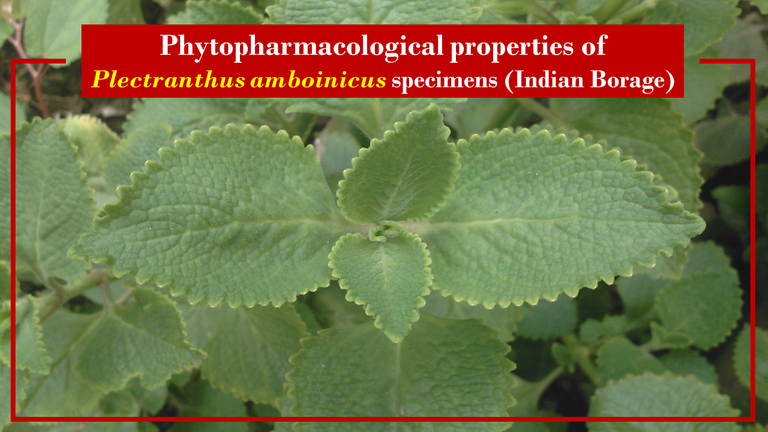
Developing phytopharmacological studies has become a frequent practice, and a topic of great interest in recent years, in the search to generate encouraging results aimed at balancing the use of synthetic drugs, an aspect that has been the main reason for presenting users of the #HIVE platform, especially friends of the #STEMsocial communities delivering scientific content of an experimental and clinical nature, in this sense, and continuing with the thematic line, this contribution deals with Phytopharmacological properties of Plectranthus amboinicus specimens (Indian Borage).
Introduction
A Plectranthus amboinicus, is known in Central America as Indian Borage, while in South America in most countries is designated as Oregano, however, commonly in Venezuela is identified as Oregano orejón, in botanical terms are specimens of the family Lamiaceae, characterized by presenting succulent consistency, aromatic, pubescent, and proven phytopharmacological.
The phytopharmacological potential of the specimens of Plectranthus amboinicus has captured a greater interest of the scientific community, if we compare it with Plectranthus neochilus Boldo rastrero, or Acetaminophen plant material already addressed in this topic, however, it is important to point out that the phytopharmacological interest hovers over the Indian Borage, is mainly due to the photochemical action of its phytomethabolites, to act quickly in chronic asthma, bronchitis, kidney stones, gallstones, abdominal cramps, convulsions, epilepsy, liver damage, malaria, pneumonia, coughing problems, among other diseases.
Indian Borage, as already mentioned is known to Plectranthus amboinicus in Venezuela, is one of the main plants of medicinal use in this South American country, catalogued as the most folkloric vegetable species to treat earache in children by means of the application of drops obtained from infusions based on young foliar laminae, in addition to its utility for the preparation of concoctions with potential to alleviate the common cold, and phlegm accumulation sufferings.
Consequently, and aware of the cultural value that Indian Borage has in most Hispanic countries, the objective of this delivery is to present the main vegetative and reproductive morphological attributes of Plectranthus amboinicus, in addition to its phytopharmacological responses, adverse reactions, and phytopharmacological profile.
Botanical characteristics
Taxonomy and distribution
Indian Borage is artificially placed in the Division: Magnoliophyta., Class: Magnoliopsity., Order: Lamiales., and Family: Lamiaceae, is a plant material of herbaceous biotype, perennial growth, and with natural adaptability to tropical ecosystems, essentially in warm regions of Africa, Asia and Australia.
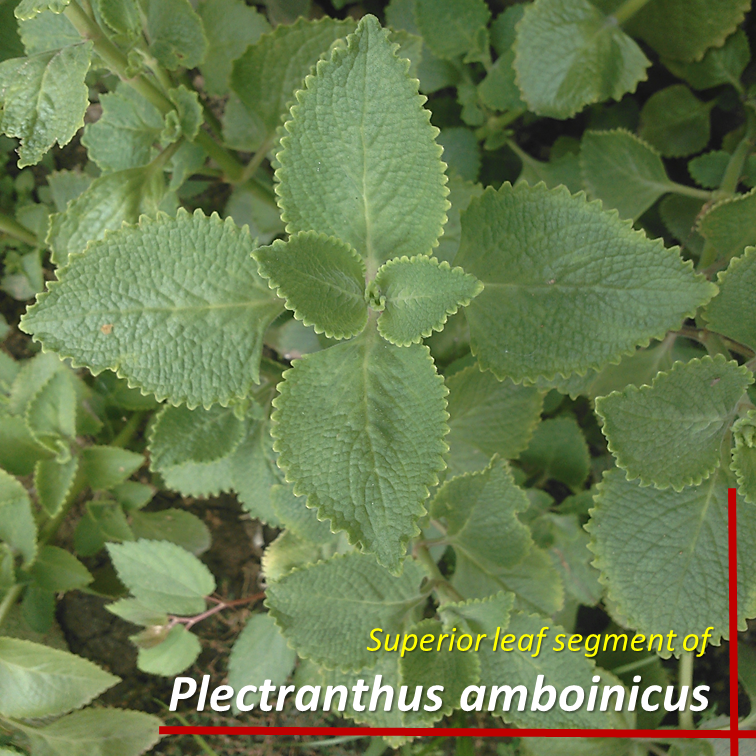
Fig. 2 Superior leaf segment of Plectranthus amboinicus. Author: @lupafilotaxia.
Common names
As indicated at the beginning of this manuscript, in vernacular form Plectranthus amboinicus, is known in several ways, namely; Indian Borage, Oréganon, Oregano orejón, among other designations of less colloquial significance.
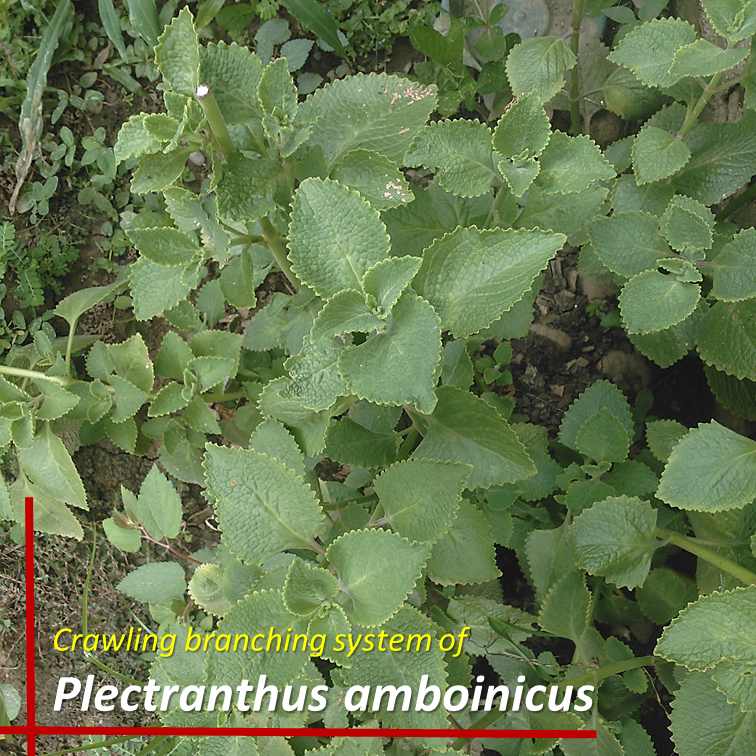
Fig. 3 Crawling branching system of Plectranthus amboinicus. Author: @lupafilotaxia.
Vegetative and reproductive morphology
The organographic characteristics, and morphological details of Plectranthus amboinicus, are similar to those exhibited by specimens of Plectranthus neochilus, or Acetaminophen as it is commonly identical in Venezuela, namely herbaceous stems, with long and rigid trichomes, simple and aromatic, thick, insertion peciolated, pubescent leaf blades, opposite phyllotaxic pattern decussated, oval aspect, serrated margin, acute apex, and cuneiform base, purple colored flowers, smooth fruits, of pale brown color, however, within the botanical elements that differentiate the plants of Indian Borage, with respect to those of Acetaminophen, are their excessive system of creeping branching, and the fertility problems that these specimens of P. amboinicus.
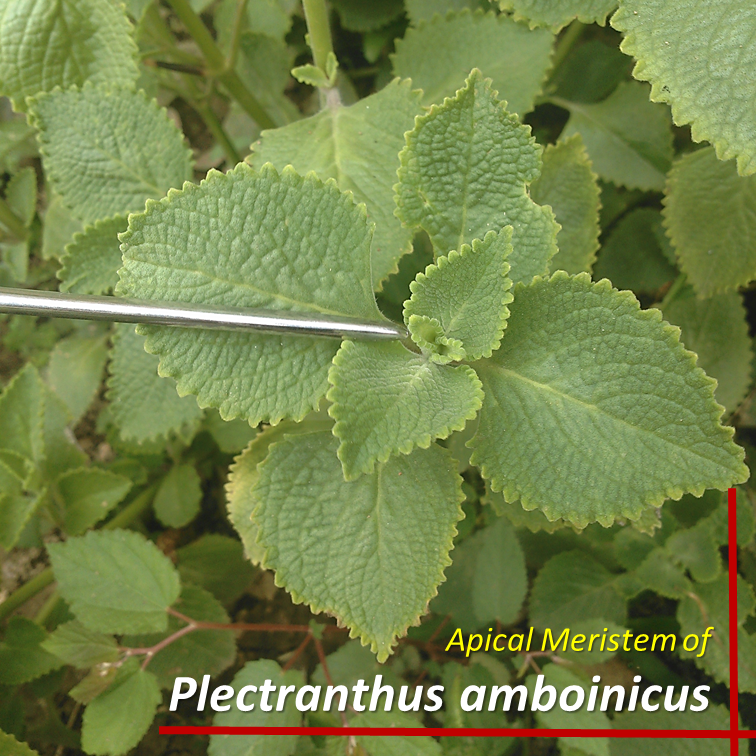
Fig. 4 Apical Meristem of Plectranthus amboinicus. Author: @lupafilotaxia.
Phytopharmacological responses
Phytometbolites reported
Experimentally, Plectranthus amboinicus, has been given a great amount of medicinal properties for the treatment of different pathologies, mainly due to the capacity of its phytomethabolites to inhibit catalytic oxidations, and the processes that induce the formation of free radicals in the body, however, the most effective medicinal responses have been shown by the phytosubstances reported in the essential oils that have the foliar laminae of Indian Borage, identifying carvacrol (C₆H₃CH₃), as the phytochemical compound of effective phytopharmacological potential, and responsible for printing the characteristic smell that exhibits this plant material [1].

Fig. 5 Chemical structure of the Carvacrol. Design made by the Author: @lupafilotaxia.
The second phytosubstance, of proven phytopharmacological action that has been reported in Plectranthus amboinicus, is a terpene called thymol (2-isopropyl-5-methylphenol), with anti-pathogenic behavior.

Imagen 6. Chemical structure of the Timol. Design made by the Author: @lupafilotaxia.
Anti-bacterial effect
It is not common to find in the tropics plant species with anti-bacterial action, since generally the effect of phytomethabolites present in the extensive tropical flora, prescribe anti-viral effectiveness, however, the main phytopharmacological advantage reported in Plectranthus amboinicus, is its anti-bacterial potential, this because, its hydroalcoholic extracts inhibit microbial growth, especially of staphylococcus bacteria [2].
Antimalarial action
In experimental trials developed by [3], the phytosubstances reported in foliar extracts based on Plectranthus amboinicus, reduce to 100% the presence of parasites in the blood, specifically those that have been associated with malaria. Therefore, based on these promising results, other researches are being proposed in order to isolate the active principle, responsible for the reduction of the parasitism (parasites associated with malaria).
Chemotherapeutic activity
There are few phytopharmaceuticals of proven experimental chemotherapeutic response, hence, it is considered that phytometapholites present in essential oils of Plectranthus amboinicus are the main phytosubstances of anticancer activity, among the studies that demonstrate this remarkable therapeutic response, are the data reported by [4], who has demonstrated the potent chemotherapeutic/chemo-preventive effect of Indian Borage on pulmonary metastasis.
Anti-inflammatory activity
The phytosubstances of Plectranthus amboinicus, register certain capacity, to treat the inflammation diseases or symptoms of swelling, essentially pathologies related to rheumatoid arthritis, where the phytomethabolites of the foliar laminae act protecting, and helping to lubricate the joints.
Expectorant action
The expectorant action is the most deeply rooted cultural use of the aqueous extracts of Plectranthus amboinicus, due to its capacity to alleviate respiratory problems. This response has been verified at an experimental and clinical level, by finding favorable action of the phytosubstances Carvacrol and Timol, on chronic asthma, pneumonia, bronchitis, where acceptable levels of phlegm and mucus elimination are registered.
Analgesic activity
In the countries of South America, it is used to apply 1 to 2 drops of infusions based on foliar laminae of Indian Borage, to calm earaches in children, although, also they usually apply in adults in repeated intervals during the day, nevertheless, this well-known homemade remedy has its scientific endorsement, since the fitometabolitos of Plectranthus amboinicus, prescribe analgesic answers of fast action, as much in earaches, head, neck and back.
CONTRIBUTIONS OF THIS PUBLICATION
- In the manuscript, the most outstanding experimental reports that point out the main phytopharmacological potentialities of the specimens of Plectranthus amboinicus, are weighted by annexing information on the components or phytosusntacies of bioactive behavior of effective action to treat diseases of bacterial infection, carcinogenic ailments, inflammatory conditions, respiratory problems and pain conditions, answers that allow visualizing the enormous future perspective that Indian Borage can provide to the phytopharmacological industry.
BIBLIOGRAPHICAL REFERENCES CONSULTED AND CITED:
[1] Vizoso A., Ramos A., Edreira A., Betancourt J., y Décalo M. Plectranthus amboinicus (lour.) spreng (Orégano francés). Estudio toxicogenético de un extracto fluido y del aceite esencial. Rev Cubana Plant Med. 1999; 3, 2: 68-73. Article: Online access
[2] Gurgel A., Silva J., Grangeiro A., Xavier H., Oliveira R., Pereira M., and Souza I.. Antibacterial Effects of Plectranthus amboinicus (Lour.) Spreng (Lamiaceae) in Methicillin Resistant Staphylococcus aureus (MRSA). Lat. Am. J. Pharm. 2009; 28; 3: 460-4. Article: Online access
[3] Periyanayagam K, Nirmala D., Suseela L., Uma A., and Ismail M. In vivo antimalarial activity of leaves of Plectranthus amboinicus (lour) spreng on Plasmodium berghei yoelii. The Journal of Communicable Diseases. 2008; 40; 2: 121-125. Article: Online access
[4] Manjamalai A., and Berlin G. The Chemotherapeutic Effect of Essential Oil of Plectranthus amboinicus (Lour) on Lung Metastasis Developed by B16F-10 Cell Line in C57BL/6 Mice. Published online. 2012; 74-82. Article: Online access
[5] Jia-Ming C., Chun-Ming C., Le-Mei H., Yuh-Shan C., and Rey-Yuh W. Potential Use of Plectranthus amboinicus in the Treatment of Rheumatoid Arthritis. eCAM. 2010; 7: 1. Article: Online access
[6] Arumugam G, Mallappa K., and Sinniah U. Plectranthus amboinicus (Lour.) Spreng: Botanical, Phytochemical, Pharmacological and Nutritional Significance. Molecules. 2016; 21: 369 Article: Online access
ATTENTION
Readers and followers
If you wish to read more scientific articles in English or Spanish, of excellent academic quality, do not hesitate to visit #STEMSocial and #STEM-espanol, communities that promote scientific content mainly in the areas of Science, Technology, Engineering and Mathematics.
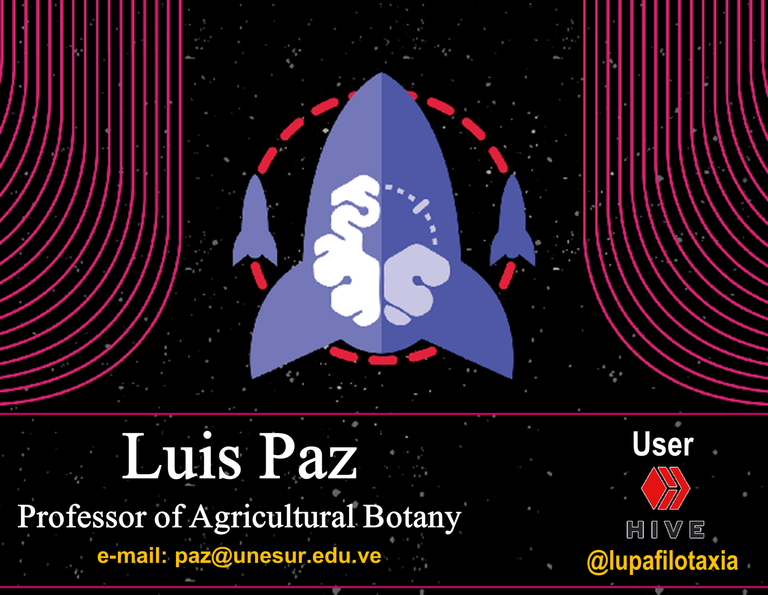
#Posh Twitter:
Locally we call it ajwain plant and almost every house has it. This is a great plant to treat gastritis - 1-2 leafs in the morning works more than a medicine. And the best part is that you don't get addicted - typically that happens with medicine.
Greetings @sanjeevm, I intuit that the positive effect that you describe, perhaps is due to the fact that this type of gastritis probably comes from an infection in the stomach, the non-addictive effect is because, it is taken in low doses which is ideal. Thank you for sharing your experience with Plectranthus amboinicus.
Thanks for your contribution to the STEMsocial community. Feel free to join us on discord to get to know the rest of us!
Please consider supporting our funding proposal, approving our witness (@stem.witness) or delegating to the @stemsocial account (for some ROI).
Please consider using the STEMsocial app app and including @stemsocial as a beneficiary to get a stronger support.
Mano pues un buen caldo no cae mal con este sazonador pero no sabía que fuera tan beneficioso para la salud, bueno ahora ya sé que mejorare mi salud al agregarlo a los caldos